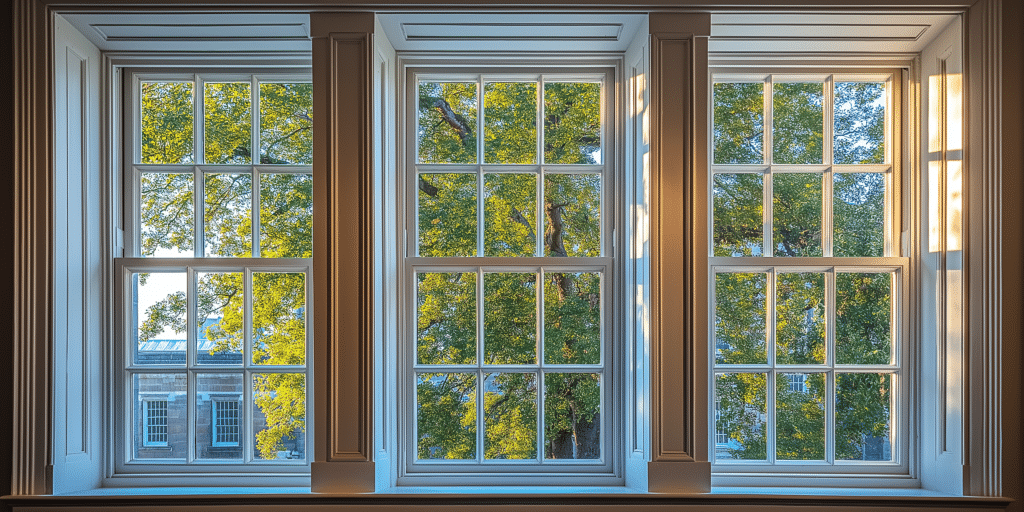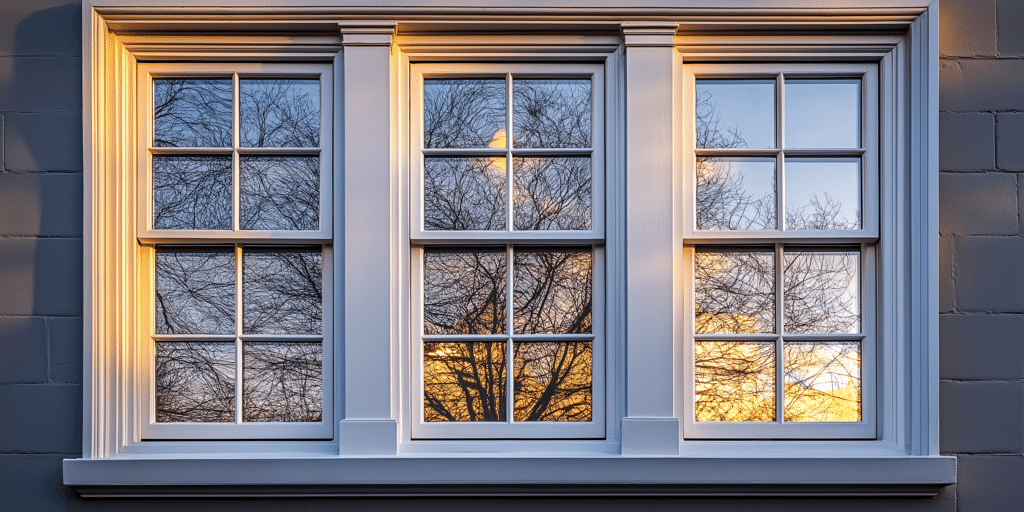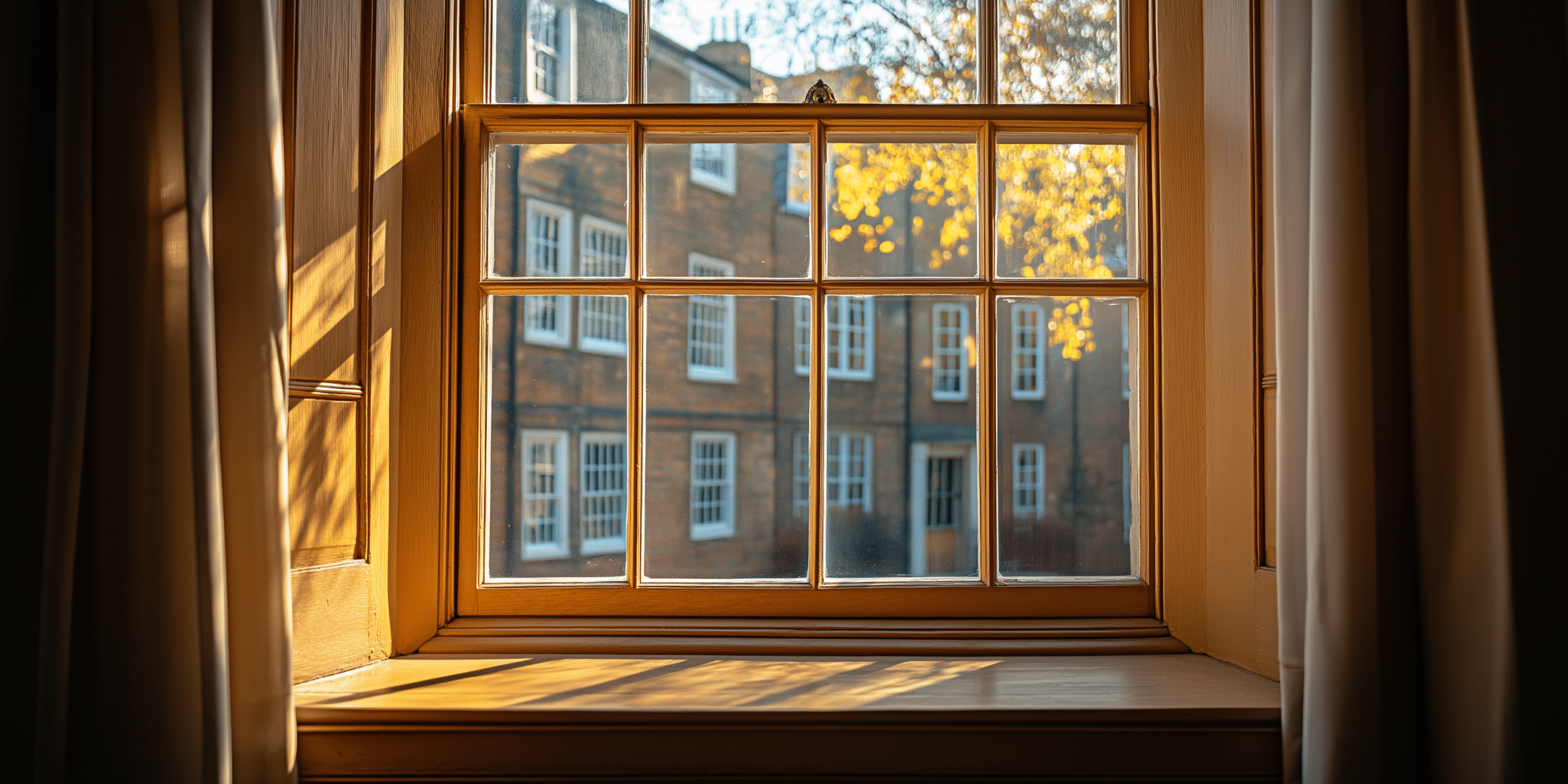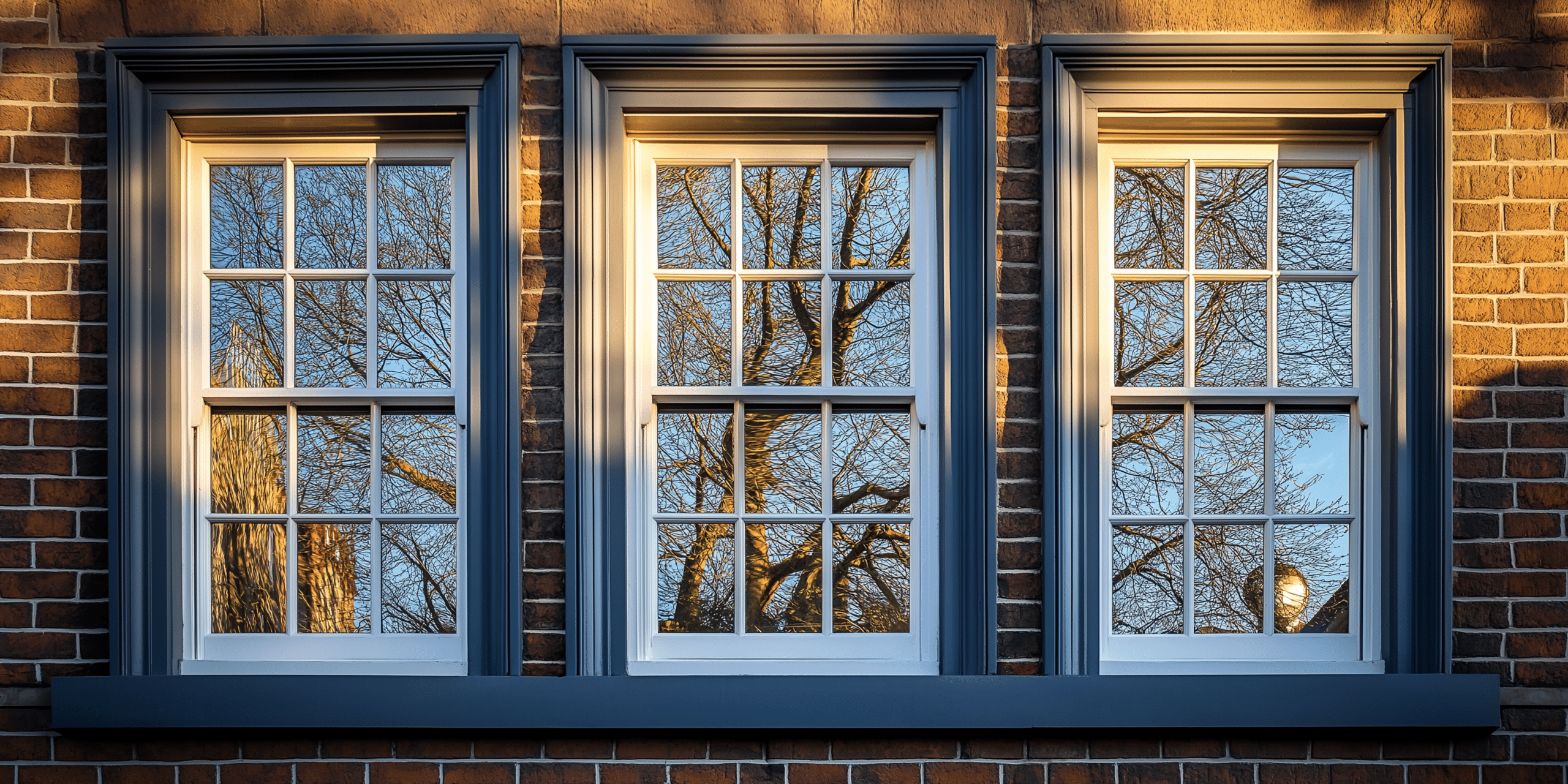Maximising Fresh Air with Sash Windows
Sash windows are an elegant and functional solution for enhancing home ventilation, seamlessly blending style with purpose. By allowing users to open both the top and bottom sashes, these windows enable natural airflow, which creates a balanced exchange of warm and cool air within the space.
Opening the top sash lets warm air escape, while the lower sash invites cooler air inside, effectively harnessing the principle of convection to circulate fresh air. This unique dual opening system allows for up to four complete air changes per hour, promoting cleaner, healthier indoor air quality—a major plus for any household.
Why Ventilation Matters for Your Health and Comfort
In modern homes, adequate ventilation often becomes secondary to insulation, leading to stuffy interiors and potential health risks. Fresh air flow not only reduces indoor pollutants but also maintains optimal humidity levels, which can deter mould growth and reduce allergens. Sash windows naturally achieve this balance without costly air conditioning by aligning with the home’s energy efficiency goals.
Stylish and Sustainable: Sash Windows in Modern Design
Sash windows boast a timeless appeal, blending effortlessly with various architectural styles. Their design heritage speaks to a lasting relevance, proving that a classic structure can meet contemporary needs. With their ability to improve air quality and boost comfort, sash windows are a simple yet impactful choice for healthier, more sustainable living spaces.
Understanding the Basics of Sash Windows
What Are Sash Windows?
Sash windows are a traditional style of window consisting of two vertically sliding panels, or “sashes,” that allow opening at both the top and bottom. Originating in the 17th century, these windows continue to be a beloved choice for their classic look and impressive functionality, blending seamlessly into both heritage and contemporary homes. The design fosters natural ventilation by facilitating airflow in a controlled way, which enhances indoor comfort and reduces reliance on mechanical ventilation.
Single-Hung vs. Double-Hung Sash Windows
Sash windows come in two main types:
- Single-Hung Sash Windows: Only the bottom sash is moveable, with the top sash fixed in place. This design offers a simple yet effective ventilation solution and is often more economical.
- Double-Hung Sash Windows: Both sashes are moveable, providing even greater control over ventilation. Opening both sashes allows warm air to escape from the top and cool air to enter from the bottom, maximising airflow and enabling up to four complete room air changes per hour.
How Do Sash Windows Differ from Other Styles?
Unlike casement or sliding windows, sash windows are uniquely suited to providing efficient, passive ventilation without occupying additional exterior or interior space. They’re particularly beneficial for homes seeking improved air quality and energy efficiency, thanks to their natural air flow capabilities.
Are Sash Windows Right for Your Home?
With their adaptable design and effective ventilation, sash windows are an excellent choice for modern homes prioritising both style and function. For a closer look at various design options, view our Gallery of Sash Window Styles, and explore further details in our Types of Sash Windows article.
The Ventilation Advantage: How Sash Windows Keep Your Home Fresh

Harnessing Natural Ventilation with Sash Windows
Sash windows are uniquely designed to enhance ventilation through a natural, effective airflow system. By opening both the top and bottom sashes, cool air flows in from below, while warm, stale air exits from above. This vertical ventilation technique allows continuous air circulation, improving indoor air quality and reducing indoor pollutants without relying on mechanical ventilation systems.
Effective Humidity Reduction
Proper ventilation through sash windows also helps to manage indoor humidity levels, crucial in damp or humid climates. When airflow is consistent, moisture doesn’t accumulate, preventing mould and mildew, which can impact health and comfort. For homes in high-humidity areas, sash windows offer an ideal solution to minimise moisture buildup and maintain a fresh indoor environment.
Energy Efficiency in Ventilation
Sash windows also promote energy efficiency by providing a natural cooling method that can reduce reliance on air conditioning. By harnessing the principles of airflow, sash windows create a natural, zero-cost cooling system, which can lower energy bills and make homes more sustainable. For more on how sash windows contribute to energy efficiency, explore our detailed section on Energy Efficiency of Sash Windows.
Choosing the Right Sash Window Style for Ventilation Needs
Exploring Sash Window Types and Their Ventilation Benefits
Choosing the right sash window style can optimise ventilation while aligning with your home’s design. Here’s a breakdown of popular sash window styles and how they contribute to airflow:
- Double-Hung Sash Windows: Featuring two movable sashes, double-hung windows allow both the top and bottom sections to open. This design facilitates optimal ventilation by enabling warm air to escape from the top and cool air to enter from the bottom, creating a continuous airflow cycle. This unique functionality not only improves indoor air quality but also helps regulate indoor humidity levels effectively.
- Single-Hung Sash Windows: With only the bottom sash operable, single-hung windows offer a more traditional look and are ideal for spaces where limited ventilation is needed. Although single-hung windows provide less airflow control than double-hung options, they still allow for adequate air circulation in smaller rooms or heritage homes.
- Tilt Sash Windows: These sash windows offer flexibility with a tilting mechanism that aids in airflow control and cleaning accessibility. Ideal for modern homes, tilt sash windows combine contemporary design with functional airflow management, giving homeowners precise control over ventilation.
Matching Styles with Home Design
Sash windows come in various styles, from classic to modern. For a traditional aesthetic, single-hung sash windows blend seamlessly into period properties. In contrast, double-hung and tilt options are suitable for modern homes where enhanced ventilation and flexibility are prioritised.
Harnessing Natural Airflow with Sash Windows
Sash windows are uniquely suited to leverage natural ventilation, creating a self-sustaining airflow that can regulate indoor temperature efficiently. Their design takes advantage of basic thermal dynamics principles, optimising how warm and cool air move within a space.
How Sash Windows Facilitate Natural Air Circulation
The fundamental physics of natural ventilation lies in the way air moves in response to temperature and pressure differences. When the top sash of a sash window is opened, warm, stale air naturally rises and exits through the upper opening. Simultaneously, cooler, denser air is drawn into the room through the bottom sash. This continuous flow, known as vertical ventilation, keeps indoor spaces fresh and comfortable while reducing moisture build-up, particularly in humid climates.
Thermal Benefits and Temperature Regulation
By facilitating the movement of warm and cool air, sash windows support a steady, balanced indoor temperature. This natural cooling process can often reduce reliance on air conditioning or mechanical cooling systems, contributing to energy savings and lower bills. In addition, the strategic placement of sash windows across a home can enhance airflow patterns, improving ventilation in every room.
Sash Windows as an Eco-Friendly Ventilation Solution
Sash windows provide a low-cost, eco-friendly cooling option, relying solely on natural air movements rather than powered systems. With this effective natural cooling, sash windows support both energy efficiency and sustainable living.
Why Sash Windows are Superior for Ventilation

Sash windows hold a unique advantage over other window types due to their distinctive vertical ventilation system, providing a natural method for maintaining fresh indoor air. Unlike casement or sliding windows, sash windows allow controlled airflow through both the top and bottom openings, creating a continuous, natural cycle that maximises ventilation.
Comparing Sash Windows with Casement and Sliding Windows
- Vertical Ventilation: Sash windows provide dual openings, with the top letting out warm air while the bottom draws in cooler air, establishing an efficient airflow. This makes them particularly effective for managing indoor temperature without relying on mechanical cooling.
- Enhanced Air Quality: By allowing fresh air circulation from the bottom while releasing stale air at the top, sash windows significantly improve indoor air quality, reducing humidity and preventing moisture build-up.
- Flexibility in Airflow Control: Unlike casement windows, which often open outward and are limited to one-directional airflow, sash windows’ vertical sliding mechanism supports adjustable ventilation that suits a variety of climate needs.
- Aesthetic and Functional Benefits: Sash windows blend traditional charm with practical function, making them suitable for both heritage and modern home styles. Their design also provides unobstructed views and a classic appeal unmatched by casement or sliding alternatives.
In short, sash windows offer superior ventilation and airflow control, with the added benefits of enhanced indoor air quality and energy efficiency, making them an ideal choice for households prioritising natural cooling.
Energy Efficiency and Environmental Benefits of Sash Windows
Sash windows are not only a timeless addition to your home’s aesthetic but also a smart choice for energy-conscious homeowners. By harnessing natural ventilation, sash windows help to maintain a comfortable indoor temperature without the heavy reliance on air conditioning or fans, reducing both energy costs and environmental impact.
Key Environmental and Energy-Saving Benefits
- Natural Cooling: Sash windows create an effective natural cooling system by allowing warm air to escape through the top opening while drawing in cooler air from the bottom. This process can reduce the need for air conditioning, cutting down on energy consumption and utility bills.
- Sustainable Ventilation: Unlike mechanical ventilation systems, sash windows offer a low-impact way to maintain indoor air quality. The continuous flow of fresh air also helps to manage indoor humidity, reducing the need for dehumidifiers or additional cooling appliances.
- Long-Term Energy Savings: Homes with properly positioned sash windows experience reduced energy demand over time, as natural airflow minimises the frequency and intensity of HVAC use, contributing to significant cost savings in the long run.
- Eco-Friendly Option: For homeowners looking to create a sustainable home, sash windows provide an environmentally friendly solution, enhancing air quality while reducing reliance on non-renewable energy sources.
Sash windows embody a green, efficient choice for ventilating and cooling your home, offering both environmental benefits and energy savings that support a sustainable lifestyle.
Breathing Easier: Health Benefits of Proper Ventilation with Sash Windows
Proper ventilation is essential for a healthy home, and sash windows offer an effective way to maintain high indoor air quality. By facilitating fresh air flow, sash windows reduce indoor pollutants, allergens, and excess humidity, creating a safer and more comfortable environment for your family.
Health Benefits of Enhanced Ventilation with Sash Windows
- Reduction of Indoor Pollutants and Allergens: Sash windows enable consistent air changes, allowing pollutants and allergens, such as dust and pet dander, to escape. This reduces triggers for allergy and asthma symptoms, making it easier for sensitive family members to breathe comfortably.
- Humidity Control to Prevent Mold Growth: By managing humidity levels, sash windows discourage mould and mildew, which thrive in damp conditions and can lead to respiratory issues. With sash windows, you can maintain optimal humidity levels naturally, preventing mould-related health risks.
- Improved Respiratory Health: Good ventilation removes stale air and brings in fresh oxygen, which is vital for lung health. This can minimise the risk of respiratory issues and contribute to overall wellness for household members, especially those with existing respiratory conditions.
- Enhanced Indoor Comfort: Sash windows create a flow of fresh air that boosts indoor comfort, reducing the stuffiness associated with closed spaces. The natural ventilation cycle promotes better rest and enhances mood, contributing to a more pleasant living environment.
Thus, sash windows provide a holistic approach to healthy living by combining effective ventilation with pollutant and humidity control, creating a well-ventilated, allergy-friendly home.
Maximising Ventilation: Best Practices for Sash Window Use

Using sash windows strategically can significantly enhance your home’s ventilation, providing fresh air and a comfortable environment year-round. Here are best practices to optimise airflow with sash windows.
1. Utilise Cross-Ventilation on Cooler Days
Position sash windows on opposite sides of a room to create a cross-breeze, allowing air to flow freely from one side to another. This setup is ideal for cooling spaces naturally, especially during mild weather.
2. Open Both Sashes for Optimal Airflow
For effective ventilation, open the top and bottom sashes simultaneously. This arrangement lets hot air escape from the top while drawing in cooler air from below, creating a steady circulation that regulates indoor temperature naturally.
3. Manage Humidity in High-Moisture Areas
Use sash windows in areas prone to high humidity, such as kitchens and bathrooms, to prevent dampness and mould. Proper ventilation here is key to maintaining air quality and comfort.
4. Adjust Seasonally for Energy Efficiency
In winter, keep sash windows minimally open to avoid heat loss, and in summer, use them during cooler parts of the day to reduce energy use for air conditioning. Avoid over-ventilating during extreme temperatures to maintain energy efficiency.
These simple adjustments allow sash windows to function as an energy-efficient, effective solution for a fresher, healthier home.
Customising Sash Windows for Optimal Ventilation in Your Home
Customising sash windows offers tailored solutions for enhancing both ventilation and energy efficiency in your home. From material choices to glazing options, each customisation can significantly influence airflow and insulation.
1. Select Glazing for Energy Efficiency and Ventilation
- Double or Triple Glazing: Double or triple glazing options can enhance energy efficiency without compromising ventilation. These glazing types help retain warmth during colder months while allowing fresh air circulation when the sashes are open.
- Glazing Coatings: Opt for low-emissivity (Low-E) coatings on glass to control heat transfer, ensuring a comfortable temperature indoors, particularly during winter.
2. Choose the Right Frame Material
- Wood Frames: Wood is a traditional choice offering strong insulation and a natural look that supports ventilation and reduces drafts.
- uPVC Frames: uPVC is durable and low-maintenance, providing excellent insulation and airflow efficiency when combined with proper glazing.
- Aluminium Frames: Aluminium frames provide a sleek, modern aesthetic, are lightweight, and can be designed to accommodate larger sash windows for maximised ventilation.
3. Customise Sash Sizes for Your Home’s Needs
Adjusting sash size and positioning allows for optimal airflow control in rooms of different sizes. Larger sashes increase the ventilation potential, especially in high-humidity areas like kitchens and bathrooms.
These customisation options not only support effective ventilation but also contribute to energy savings and the aesthetic appeal of your home.
Keeping Sash Windows in Top Shape for Optimal Ventilation
Regular maintenance of sash windows is essential to keep them functioning smoothly and ensure they provide long-lasting ventilation benefits. Simple upkeep tasks not only improve their durability but also enhance their ability to keep indoor air fresh and comfortable.
Essential Maintenance Tips
- Lubricate the Tracks
- Regularly applying lubricant to the window tracks ensures smooth opening and closing, allowing better control over ventilation.
- Check and Reseal for Drafts
- Inspect the edges of your sash windows for any drafts. Resealing with appropriate weather stripping helps prevent air leaks, ensuring controlled ventilation and energy efficiency.
- Clean Glass and Frames
- Dust and debris can accumulate, impacting functionality. Wipe down both the glass and frames to avoid obstructions that might hinder airflow and maintain clear visibility.
- Inspect Sash Cords and Pulleys
- Functional cords and pulleys are crucial for smooth operation. Check for wear and tear, and replace any damaged parts to keep the windows in working condition.
By maintaining these components, you enhance both the lifespan and ventilation performance of your sash windows. Regular care makes it easy to enjoy fresh, clean air without disruptions.
Transform Your Living Space with Expertly Installed Sash Windows

Enhance your home’s comfort and air quality by upgrading to professionally installed sash windows. London Sash Window Experts specialise in customised installations, ensuring each window is tailored to meet your ventilation needs while complementing your home’s unique aesthetic.
Why Choose London Sash Window Experts?
- Expert Installation for Optimal Ventilation: With years of experience, our skilled team ensures your sash windows maximise natural airflow, keeping your indoor environment fresh and comfortable.
- Customised Solutions: From selecting energy-efficient glazing to choosing the best materials, we provide guidance on every detail, helping you design windows that balance style with performance.
- Enhanced Comfort and Sustainability: Professionally installed sash windows can reduce dependency on air conditioning, leading to energy savings and a more sustainable home environment.
Start Your Journey with a Free Consultation
Discover the difference our sash windows can make. Schedule a Free Consultation today and see why countless homeowners trust us for exceptional service and expertise.
“The team at London Sash Window Experts transformed our home. Not only do our rooms feel brighter and better ventilated, but the energy savings have been fantastic!” — Jessica M., Happy Customer
Get a Free Consultation
FAQ Section
How does a sash window provide better ventilation than a casement window?
Sash windows stand out for ventilation due to their unique double-hung design, allowing both top and bottom openings. This enables continuous airflow, as warm air exits from the top sash while cooler air enters from the bottom, making it ideal for multi-story homes where controlled ventilation is crucial. In comparison, casement windows open from the side, offering limited airflow direction. For homes seeking customisable airflow, sash windows deliver superior ventilation flexibility.
Can sash windows help reduce humidity in my home?
Yes, sash windows are effective at lowering indoor humidity. By facilitating consistent air exchange, they help reduce moisture buildup, which can prevent mould and mildew. This natural humidity control not only enhances comfort but also contributes to a healthier living environment, potentially reducing the need for dehumidifiers.
What are the most common maintenance issues with sash windows?
Typical sash window issues include sticking frames and broken cords. Routine maintenance, like lubricating the tracks and checking for drafts, can prevent these problems. Seasonal inspections are recommended to ensure cords and pulleys remain functional, helping extend the window’s life and ensuring smooth operation.
Are sash windows energy efficient?
Sash windows, especially those with double glazing, can improve energy efficiency by reducing the reliance on HVAC systems. By leveraging natural ventilation during warmer months, they reduce the need for cooling. Additionally, double-glazed sash windows provide better insulation, helping maintain indoor temperatures throughout the year.
What materials are best for sash windows if I want good ventilation?
Materials like wood and uPVC offer excellent insulation, while aluminium is more durable, particularly in harsh conditions. Wood is ideal for climates where both insulation and natural ventilation are needed, whereas aluminium suits humid or coastal environments due to its durability.
Can sash windows be installed in homes with modern designs?
Absolutely, sash windows can enhance both traditional and modern homes. Custom sash windows offer sleek profiles, modern finishes, and frame colour choices to blend seamlessly with contemporary styles. This design flexibility makes them a practical yet stylish addition to any home looking to balance aesthetics with functionality.







